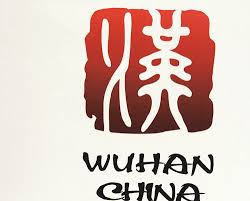By shutting down chemical companies and turning industrial areas into new ecological communities, Wuhan has dramatically reduced pollution and enabled healthier lives in the restored environment.
In a first for China, the City of Wuhan converted an industrial area, the Gutian Old Industrial Zone, into a green, low-carbon district called the Gutian Ecological New Town. In 2014, the city shut down or relocated 99 chemical enterprises, reducing the total emissions of main pollutants by at least 90%. The Gutian Ecological New Town will make use of solar and wind power and absorb heat from the Han River to supply residential units with heating and cooling. All buildings will be constructed using ecological building technologies. A public transport network of low carbon light-rail with stations within 300 meters of all residents, and green bicycle routes will ensure eco-friendly traveling in the new ecological town.
33.8 million tons CO2 reduced by the Gutian Ecological New Town’s current area
Cities100 – 2015
Under the project, the area of Gutian that had been most polluted by the former chemical companies will become a park and testing area for soil purification using biological restoration to absorb pollutants. The green projects already constructed take up 1.2 million m2 and will save 3.8 million kWh of energy and 1.3 million tons water. By 2020, the area is expected expand to 4 million m2.
The challenge
In Wuhan, an industrial park consisting of chemical enterprises was a large contributor of pollutants, resulting in detrimental environmental consequences and poor public health. The industrial park was demolished and enterprises moved. The development of an ecological city has improved the environment and the quality of life for its residents.
Co-benefits
Economic With 5,000 new green households built, and with more than $1.5 billion invested in shopping, tourism, and trade, Wuhan is expecting to see significant economic development in the area.
Environmental Investing over $157 million to restore the environment after the Gutian Old Industrial Zone, Wuhan is determined to forego its industrial past with the ecological town.
Health To ensure the health and well-being of citizens, Wuhan erected a public health services complex with a disease control center, a women and children’s hospital, and a social charity house with 1,000 beds.
Social Public green area per capita has increased from 4.5 m2 to 12.5 m2 and in total it has increased from 2.5 million m2 to 6.6 million m2, improving quality of life in the community.
About Wuhan
Wuhan is the capital of Hubei province, China, and is the most populous city in Central China. It is a major transportation hub, with dozens of railways, roads and expressways passing through the city and connecting to other major cities. Because of its key role in domestic transportation, Wuhan was sometimes referred to as “the Chicago of China” by foreign sources.


